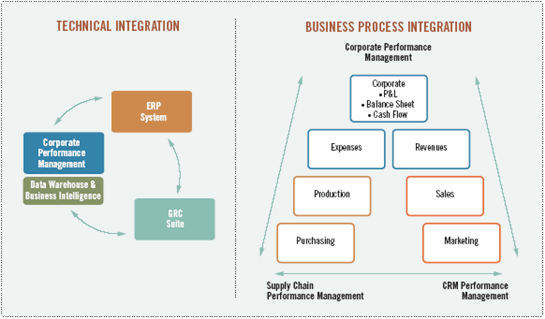LESSON - Corporate Performance Management: Departmental or Corporate?
- By Ryan Leask
- October 18, 2007
By Ryan Leask, Product Manager, SAP CPM
Sooner or later, everyone faces the same conflict when deploying corporate performance management (CPM) applications: how to balance corporate needs against departmental requirements. In most organizations, every department wants its own individually customized solution (especially for budgeting); yet this design inherently leads to multiple versions of the truth, challenges in combining the figures at a corporate level, and total cost of ownership (TCO) problems (especially when systems from multiple vendors are used).
We see organizations generally fit into one of three situations:
- They are stuck in spreadsheet hell, with no sophisticated CPM systems in place (or only deployed to a limited user base). All the problems of security, compliance, user error, reconciliation, audit, maintenance, and all the other well-known spreadsheet issues are being dealt with.
- Each department has implemented its own CPM solution, but the IT department is driving to standardize on one vendor. Each individual department is generally happy with its solution, but to have finance/corporate reconciling all the different formats causes headaches, and the IT department is left supporting a high TCO environment.
- Corporate finance has rolled out an enterprisewide CPM system that requires departments to conform to a standard solution. Each individual department loses the flexibility needed to fulfill its unique requirements and is, therefore, generally unhappy, and resorts to keeping spreadsheets. Corporate finance and IT are generally happy, though, because the system provides a consistent solution that can be easily and cost-effectively maintained.
So how can this situation be resolved in a way that meets the detailed needs of the individual business, satisfies the corporate requirements for visibility and consistency, and keeps the TCO low? We are generally seeing the market answer this question on its own, today: vendor standardization.
Vendor standardization is happening at a rapid pace. What change has triggered this? Perhaps the single biggest factor is the vendor consolidation taking place in the CPM market, forcing organizations to look at what systems and/or vendors they are now dealing with. Typically, in the past, each department pursued the best-of-breed solution that best met its requirements, while IT departments pursued solutions that integrated with the corporate environment. With the vendor consolidation in the market, some vendors, better known for their integration capabilities, are now in possession of what was once called a best-of-breed application. What is occurring, therefore, is the replacement of isolated departmental solutions with offerings from a single vendor that touts both best of breed and tightly integrated solutions.

Diagram 1. Corporate performance management integration
It is important to clarify here what “tightly integrated” means exactly, as integration needs to take place on two fronts. The first is a technical integration (see Diagram 1), where the CPM solution needs to interact seamlessly with a customer’s ERP systems, where the core financials and transactions are held; data warehousing and BI tools, used for reporting and analysis; and GRC (governance, risk, and compliance) suite, ensuring compliance and built-in risk sensitivity. The second aspect is business process integration. It’s not enough for just corporate finance to have a performance management solution. Every department in an organization should have its own solution, which meets its individual requirements, yet also seamlessly rolls up into a corporate view. For example, if marketing decides to run an additional campaign to improve sales on a specific product line, it will update its own performance management solution to reflect the increase in expected sales. In an integrated world, purchasing (which has its own individual solution) would now see that it has a shortfall to expected sales. Now, imagine this happening corporate-wide across all departments, with the data seamlessly rolling up into a corporate view and the systems all being supported costeffectively by IT (see Diagram 1). At least that is how we at SAP see the Holy Grail for CPM.
Find out more at: www.sap.com/solutions/performancemanagement/.
This article originally appeared in the issue of .